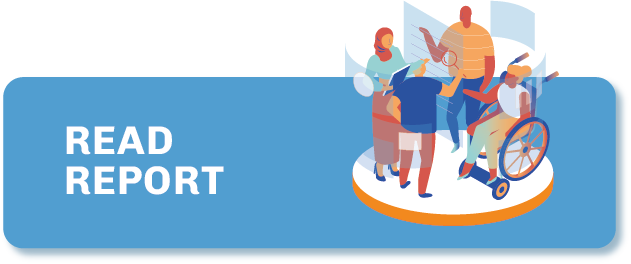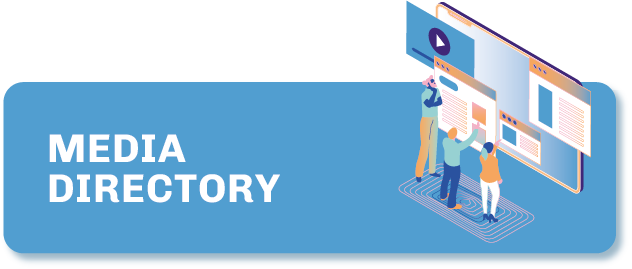Austria
Austria’s media landscape is small and highly concentrated, and has historically been dominated by the public service Austrian Broadcasting Corporation (ORF), on the one side, and a few major private newspaper publishers on the other. While these established media groups’ positions are reinforced by the state’s extensive funding scheme, the shift from traditional to digital media consumption seems irreversible. In light of a growing percentage of Austrians sourcing news online, as well as falling trust levels in public and private mass media (as noted by the Reuters Institute for the Study of Journalism in its Digital News Report 2022), digital media, albeit emerging in a challenging and competitive environment, seem to offer opportunities for more journalistic independence and pluralism in Austria.
GENERAL INFORMATION
Press
freedom
ranking
Internet
penetration
POPULATION
Media organisations
in the Directory
TYPE OF COVERAGE

TYPE OF ORGANISATION
GENDER OF FOUNDERS

Press freedom
Austria’s federal constitution and the Federal Act on the Press and Media of 1981 (Mediengesetz) guarantee media freedoms and safeguard the right to freedom of expression and information. A freedom of information act was agreed on in 2021. Austria has been well-ranked on Reporters Without Borders’ Press Freedom Index for many years, but recently, restrictions on access to information, political pressures and threats against journalists have led to a decline in media freedoms, notes Reporters Without Borders. Attempts to influence the press have been “constant”, says the organisation, illustrated by several scandals over claims of buying favourable polls and news coverage during the 2017 elections, most famously involving former Chancellor Sebastian Kurz. Generally, close ties between the government and the media have been criticised for influencing ORF and for lacking transparency.
Market structure and dominance
The Austrian media market is characterised by a dual structure. While ORF is the uncontested market leader for television, radio and online news, the privately owned newspaper Kronen Zeitung holds the strongest position in the print market and comes second online, according to the Reuters Institute’s report. Ownership concentration in the private media sector is high both vertically and horizontally, according to the Monitoring Media Pluralism in the Digital Era (MPM 2021) report by the Centre for Media Pluralism and Media Freedom.
Across provinces, most regional newspapers are owned by the same publisher, with the exception of two provinces that access only the regional edition of Kronen Zeitung, according to the European Journalism Centre’s Media Landscapes analysis. Regarding radio and television, no private broadcaster has managed to significantly challenge ORF’s leadership, according to the Media Landscapes analysis. Alternative and non-commercial media outlets exist across traditional and digital formats, but their reach and impact on public opinion remain limited, it adds.
How media is funded
State funding, through government public advertising and press subsidies, occupies a central role in media revenue and aims to ensure media diversity in Austria. While ORF is primarily state-funded, private outlets, too, are eligible. Due to concerns and criticism regarding oversight, distribution methods, transparency and a structural advantage for tabloid newspapers, a reform of media funding presented in October 2022 (Medienpaket) introduced a shift from circulation measures to a mix of quantitative and qualitative criteria. With a solid newspaper readership in Austria – more than half the adult population buys daily printed or digital newspapers, according to the Reuters Institute’s report – publishers also generate revenue through sales, advertising, metered paywalls and subscriptions.
Seven profiles of digital native media organisations from Austria are included in the directory. This includes three profiles based on interviews and four profiles based on desk research.
In parallel with the growing internet penetration in Austrian households, online outlets moved ahead of traditional media as primary news sources in 2017 for 76% of Austrians, according to the Reuters Institute’s report. Television and print media have lost popularity, but still, 66% use television as their key source of information, followed by newspapers (42%), according to the report. Even though barriers to founding digital media publications are lower compared to traditional mass media, incumbent public and private corporations (ORF, Kronen Zeitung, Der Standard, and so on) have maintained their dominant positions, both offline as well as online (as noted by Media Landscapes’ analysis), and rank among the most frequently visited news websites. This prime market position online may partly be attributed to the strong public investment these media companies benefit from.
On this account, media professionals have criticised the lack of consideration of digitally native media organisations under the latest public media funding reform. Indeed, the new bill sets high criteria upon which digital-first media outlets may receive funding, namely: that they employ at least three journalists, produce and publish at least 40 million characters annually, that editorial content accounts for at least half of all online media offerings and is fully updated at least every month, and that they demonstrate at least 300,000 independently measured unique users per month. Purely digital journalistic audio and video content is ineligible. Given this relative disadvantage, digital-first media outlets are on the lookout for alternative and innovative revenue models based on audience support, grants, consulting services and events sponsorship, in order to compete with digital outlets run by major publishers.
Responding to the growing digital news audience in Austria and resonating with calls for more journalistic independence and diversity, digitally native independent news initiatives, both commercial and not-for-profit, may be the way forward for journalism in contemporary Austria. A more enabling and incentivising environment could encourage more media professionals and entrepreneurs to enter and innovate in the digital news market. Therefore, more competition fairness and more comprehensive and inclusive funding, extended to digital-first, journalistic podcast and video content, could lower barriers such as personal investment and risk.
Last updated: January 2023
CREDIT FOR STATISTICS: Press Freedom statistics, RSF Press Freedom Index 2022; Internet penetration and population statistics, from Internet World Stats

